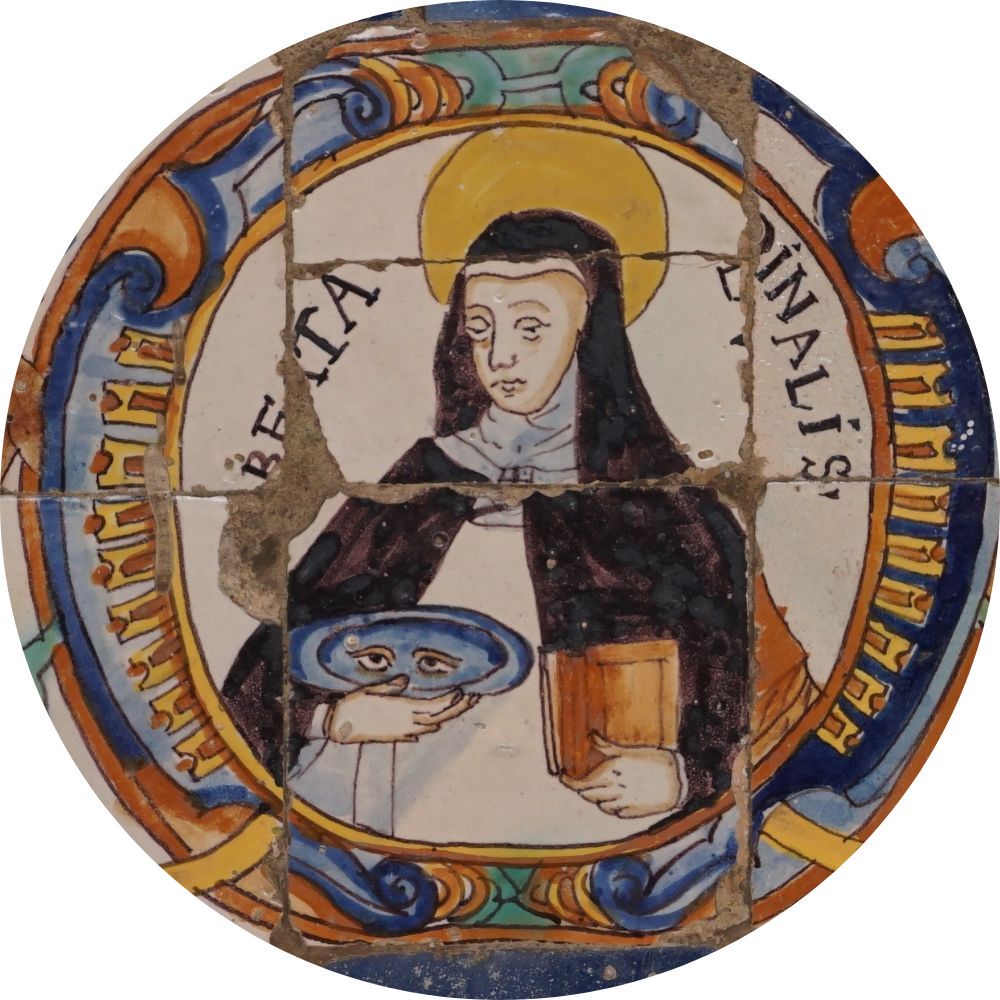Bl. Lucy of Narni
Bl. Lucy of Narni
(1476-1544)
Born in Narni on December 13, 1476, Lucia was the first of eleven children of Bartolomeo Brocade, treasurer of the municipality of Narni in Umbria, and his wife Gentilina Cassio. Her father died when she was young, then her uncle took care of her. Already as a child, she decided to dedicate her life to God, planning to become a Dominican, but her uncle intended to marry her off. He even forced her to get engaged. There is an account stating that during her engagement, 14-year-old Lucy threw the ring to the ground, slapped the suitor and fled the room. It was only after the vision of the Mother of God and St. Dominica, who recommended that she marry Count Peter di Alessio, she married him in 1491. They lived in a white marriage. Lucy was committed to helping the poor, evangelized her service and undertook many prayers and mortifications. At first, the count accepted this with leniency, but when it was reported to him that his wife often met with a certain man who resembled the man from the crucifix at which Lucy prayed, Peter became concerned. In early 1494, Lucia went to the Franciscan monastery, which turned out to be closed. Upon her return, she said she was escorted away by two saints. Then Peter locked her in the house and she could only contact some of the servants. On May 8, 1494, she managed to escape. She returned to her mother's home, but after a short time she took up the habit of the Third Order of St. Dominic, becoming a Dominican Tertian. Peter urged her to return and burned the monastery, whose prior handed her the habit.
In 1495 Lucy went to Rome, from where she was sent to Viterbo, where her task was to establish a new monastery. She stood up to the challenge. There, on February 25, 1496, she received the stigmata; moreover, every Wednesday and Friday, she physically felt Christ's passion through the actual loss of blood. It could not be hidden. The local bishop was informed of this and entrusted the Inquisition tribunal to handle the case. The tribunal referred the case to the Pope himself, who was said to have spoken with her and by the power of his authority recognized her stigmata and mystical visions, saying "Go home and pray for me." At that time, her husband asked for her return for the last time. When she refused, Peter also chose the religious path and became a Franciscan.
News of her stigmata spread very quickly. Some wanted to exploit this for their partisan ends. And so the Duke of Ferrara, Hercules d'Ercole I, decided to bring her to him. To this end, he founded her a monastery in Ferrara. Her departure from Viterbo faced many obstacles, as the authorities and residents of that city, also wanted her with them. In the end, Lucy managed to leave the city in a basket on the back of a mule. She settled in Ferrara on February 2, 1502. She became the superior of the newly founded monastery. The duke had a vision of creating a large convent for a hundred nuns. The wife of his son Alfonso - Lucrezia Borgio - helped the duke recruit candidates to the monastery. It turned out that there were many women in the convent who were unsuitable for religious life. She was very quickly led to dismissal from the office of prioress. Her place was taken by the Dominican, Maria di Parma, who wanted to incorporate the entire congregation into the so-called Second Order. After the death of Duke Hercules in 1505, Lucy was stripped of her protection. She was accused of acting against the Church and severe penalties were imposed on her. She was forbidden to meet with people, except her own confessor, who was appointed by her prioress. Lucia prayed that her stigmata would disappear, and they did. Her detention lasted until 1541, when the prioress changed. For 36 years she lived in seclusion, enduring it without complaint, even when she was sick and no one helped her. She died on November 15, 1544. She was immediately worshiped by the people of Ferrara. After four years, her coffin was opened and it was discovered that her body had not decomposed. On March 1, 1710, Pope Clement XI recognized her cult and declared her Blessed.
In iconography, Bl. Lucy of Narnia is depicted in Dominican robes with stigmata on her hand and a lily, a symbol of purity, or with the baby Jesus, whom she was said to be carrying during her mystical visions. However, in the case of the image featured in the decoration of the cloister garth of the Santo Domingo Monastery in Lima, she has - unjustifiably - eyes on a tray and a book. It seems to me that the tile with these elements should be in the representation of St. Margaret de Castello, who was blind from birth and a tile of the very image of St. Margaret, where there is a lily in hand with the stigmata, should go in this place.
Bibliography:
- Samaritani A., Presenza di Giovanni Bono e dei suoi eremiti (prima metà del sec. XIII) e ricordi di Lucia da Narni in Osanna Andreasi (fine sec. XV-inizio XVI) tra Mantova e Ferrara, „Analecta Pomposiana”, 33 (2008), pp. 53-75.
- Zarri G., La scrittura mistica e un testo controverso. L’auto biografia di Lucia da Narni, [in:] Donne e scrittura dal XII al XVI secolo, a cura di M. Fumagalli Beonio Brocchieri, R. Frigeni, Bergamo 2009 (Quod libet, 17), pp. 163-182.
- Una mistica contestata. La Vita di Lucia da Narni (1476-1544) tra agiografia e autobiografia. Con l 'edizione del testo, a cura di E.A. Matter, G. Zarii, Roma 2011.

